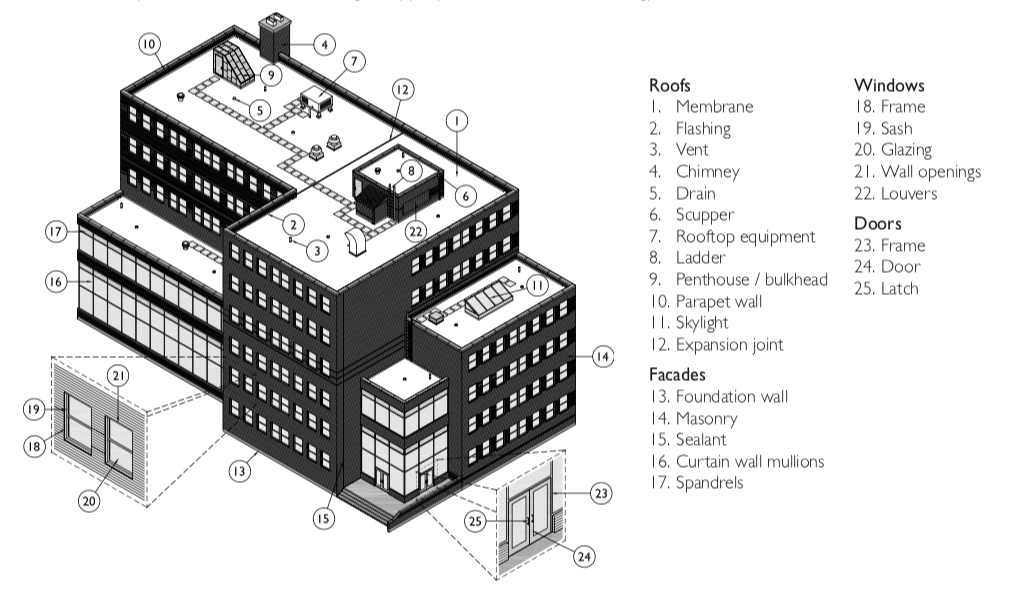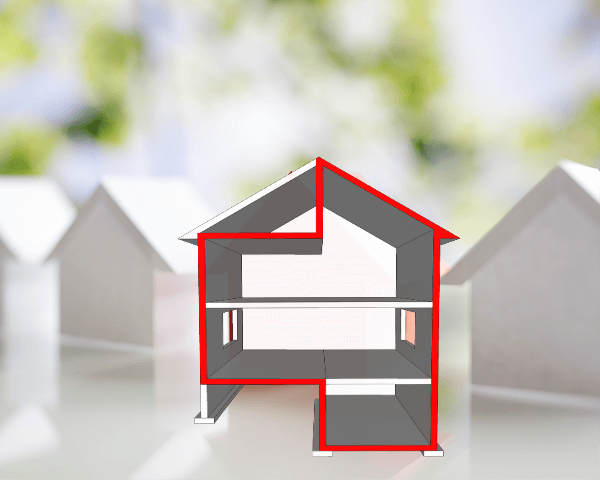With storm season fully underway and the Atlantic hurricane season running from June 1 through Nov. 30, it’s crucial that your buildings and components are structurally sound to withstand heavy winds, rains and severe storms. Having routine, comprehensive inspections performed is part of necessary risk mitigation to help you avoid costly expenses, damage, further deterioration and structural aggravation in the future.
What Is a Building Envelope?
The building enclosure or building envelope is the part of any building that physically separates the interior environment from the exterior environment. The building envelope is the scientific term for building systems that protect the inside of the building from outside elements. The roofing systems, exterior wall systems, foundations, floors, windows, doors, and air barriers make up the building envelope.
Why Do I Need to Get It Inspected?
A Building Envelope Inspection includes a professional assessment on the building’s ability to keep exterior elements out and interior elements inside. It’s important to include an annual Roof & Exterior Building Envelope Inspection in an annual maintenance program. The inspection should be performed by a accredited and licensed expert. If a problem isn’t detected, it can’t be fixed.
All buildings experience wear and tear throughout their lifetimes. The structural integrity of a building can be extremely strained and even completely compromised from severe weather. Routine repairs and professional inspections can mean the difference between your building’s systems retaining integrity or failing entirely.
Roofs Aren’t The Only Elements That Leak
Because your roof is often the first line of defense against the elements, leaks are common culprits of damage. However, there are numerous ways that water can enter the interior of a building. This is why it’s so important to get a Building Envelope Inspection. Things that we look for at Venture Construction Group (VCG) include:
- Is building grade issue forcing water into the building?
- Are there gaps or cracks in the mortar joints of a brick facade?
- Are the seals damaged, wind damaged, deteriorating or splitting? Are they physically sound?
- Is the porosity of the split-face block and EIFS up to par?
- Is the lintel detail around doors accurate per building codes?
- Are the window wells properly installed?
- Are the drains clear of debris?
- Is the foundation susceptible to leaks due to any areas that may be compromised?
There are many aspects of the Building Envelope Inspection, along with the roof. Any of these items may be culprits of future water intrusion and structural deterioration.
According to a recent article in Building Enclosure magazine, the effects of envelope failure or performance extend all the way through the building, particularly relating to moisture. Water has a way of intruding deep into a structure, causing severe flooding and damage. Indoor air quality (IAQ) is often affected by excess moisture. When combined with organic material, this moisture can create a breeding ground for bacteria and mold.
The building roof and exterior envelope prevents water and vapor from penetrating the structure. If leaks are present in either the walls or roofing, water can slowly accumulate. Precipitation deposited in an exterior envelope or roof can drain further into the structure. These issues can eventually lead to foundational and structural failure, which can mean very complicated and expensive repairs. Even something is small as a minor crack in a parapet cap can lead to a massive amount of water entering the wall. As this water is transmitted inside of the structure, it will rust any steel components and framing, saturate insulation and other material, and cause the entire exterior envelope to shift. Risk mitigation and routine repairs are important. Repairing a small leak or parapet cap is much simpler and expensive than repairing or replacing an entire roofing and exterior wall system.

Photo Source: Hoffman Architects
Weather Impacts
During a severe storm, tornado, or hurricane, massive amounts of stress on structures caused by forceful winds and heavy rains greatly increase the risk of damage. Wind mitigation becomes key to preventing massive structural failure. For example, wind speeds reach upwards of 158 miles per hour during a hurricane, and average rainfall is about 16 inches, with 70–75% falling within just a 24-hour period. A roof and exterior envelope that is already compromised will not retain integrity under such pressure.
Your building’s roof and an exterior envelope are parts of a well-oiled system that protect the interior and structure of a building. It’s important that all components are functioning together optimally. Any system or part that is deteriorated due to inadequate design or material degradation can lead to complete system failure and vulnerability to extreme damage.
How Often Should I Get A Building Envelope Inspection?
We recommend getting an annual Roof & Exterior Envelope Inspection to detect and mitigate minor issues before they become major. Routine inspections are your first line of defense in identifying risks before they can happen. These expert assessments include recommendations for repair and/or replacement of aging components, and also identify installation, design, and/or material problems while they are still minor. You also receive reporting that you can present to your insurance company in the event you ever need to file a claim.
With over 20 years of experience and the industry’s top accreditations, Venture Construction Group (VCG) is a full-service general contractor that provides construction, remodels, renovations, property management services, storm damage repairs, consulting, independent 3rd party property damage assessments, and 24/7 emergency services to residential and commercial property owners.

